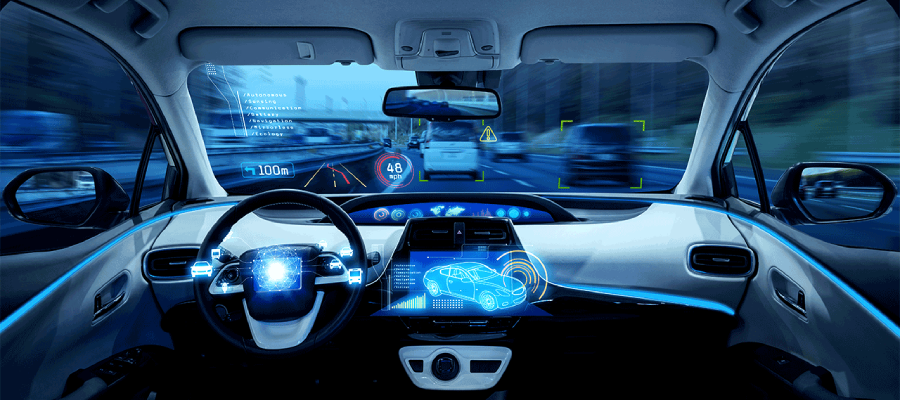
While fully autonomous vehicles may still be 5 to 10 years away from widespread adoption due to ongoing development and regulatory challenges, the adoption of partial automation is accelerating.
Features such as adaptive cruise control are becoming standard in many mid-to-high-end vehicles, reflecting a significant shift in consumer expectations and automotive technology. Advanced driver assistance systems (ADAS) level 2, such as Tesla’s Autopilot, Cadillac’s Super Cruise, and Ford’s BlueCruise, are increasingly being integrated into a growing number of vehicles. Industry estimates from SAR suggest that ADAS level 1 and 2 will dominate the market for the next decade, with ADAS level 3 beginning to see substantial adoption around 2030.
The impact of these advancements on future cockpit design could be transformative. As we move towards higher levels of automation, particularly ADAS level 4 and 5, the cockpit will undergo dramatic changes. With full autonomy, the role of the traditional cockpit, including the windscreen, could be significantly diminished. In a fully autonomous vehicle, where the car effectively becomes a mobile extension of the home, the focus will shift from driving to in-car entertainment and comfort. This could lead to the proliferation of large panoramic displays, designed to cater to passengers’ entertainment needs through immersive visual and audio content.
Alternatively, in a scenario where the vehicle serves primarily as a transportation box, passengers might rely more on personal devices for entertainment, in a bring your own device (BYOD) setting. This could include extended reality (XR) headsets or other portable media devices, minimizing the need for integrated cockpit displays.
As the industry continues to evolve, these trends underscore the need for flexible and innovative cockpit designs that can adapt to varying levels of automation and passenger needs. The future of automotive cockpits will likely involve a blend of advanced in-car entertainment systems and personal device integration, reflecting the shifting priorities of vehicle occupants in an increasingly automated world.


